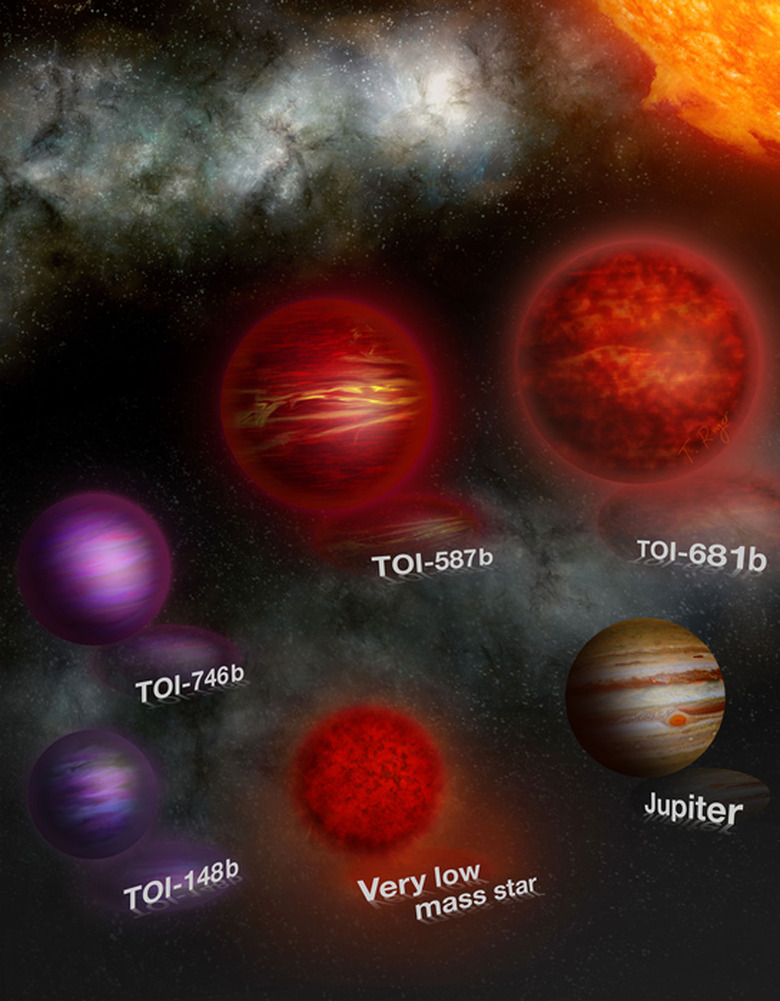Scientists Investigate Five Objects Hoping To Understand Brown Dwarfs
A new study has been completed in an attempt to answer some of the questions surrounding brown dwarfs. A brown dwarf is an object with a mass between that of a planet and a star. One of the questions scientists want to answer is where the mass limit lies. That question is the subject of debate because brown dwarfs are very similar to low-mass stars.Scientists are trying to learn how to tell the difference between a brown dwarf and a very low mass star. Scientists at the University of Geneva and the Swiss National Center of Confidence in Research PlanetS and researchers from the University of Bern have identified five objects believed to have masses near the limit separating stars and brown dwarfs. The team hopes these objects could help them understand the nature of a brown dwarf.
Jupiter, and other gas giant planets like it, are comprised mostly of hydrogen and helium. Stars are made of similar materials but are so massive and have such high gravitational force that hydrogen atoms inside them fuse, producing helium resulting in the release of energy and light. By comparison, brown dwarfs aren't massive enough to produce heat and light as stars do. However, a brown dwarf can fuse deuterium, which is a heavy atomic version of hydrogen.
Since that process isn't as powerful as fusing hydrogen atoms to create helium, the brown dwarf produces significantly less light and heat. Scientists believe the mass limits for a brown dwarf might vary depending on its chemical composition. They may also vary depending on how they form and their initial radius. Scientists have to study multiple examples in detail to learn more about them, but they are rare.
So far, only 30 brown dwarfs have been identified. However, the research team has characterized five companions that were identified using TESS as TESS objects of interest or TOI. They include TOI-148, TOI-587, TOI-681, TOI-746 and TOI-1213. Each orbits the respective star with orbital periods of 5 to 27 days, has a radius between 0.81 and 1.66 times that of Jupiter, and is between 77 and 98 times more massive than Jupiter. Their size and mass puts them on the borderline between a brown dwarf and a star.

The research team believes these five objects have valuable information that could reveal clues about brown dwarfs, including the relationship between size and age. Scientists believe brown dwarfs shrink as they age because they burn up deuterium reserves, making them cooler. They hope to determine if the object of interest are brown dwarfs. However, they admit they could be low-mass stars, and more study is needed.
